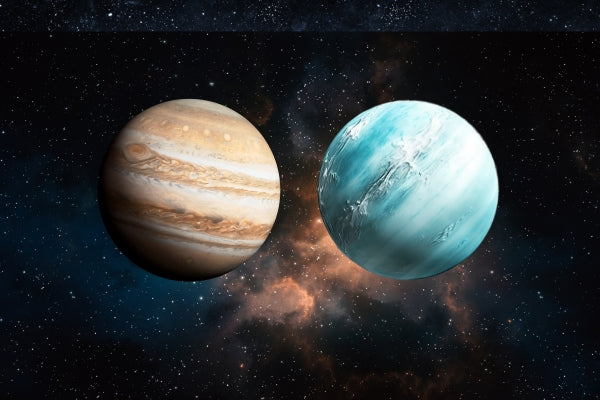A recent earthquake on the East Coast has sparked a debate, with some looking towards the heavens for an explanation.
Geologists are working diligently to pinpoint the exact cause of the tremor, but a resident astrologer for PEOPLE magazine, Kyle Thomas, offers an alternative perspective.
Earth Shakes the East Coast
A tremor measuring 4.5 on the Richter scale rattled the East Coast on the morning of April 5th. This unexpected event left many residents shaken, and geologists are currently conducting a thorough investigation to determine the cause of the earthquake. While their findings are awaited, some have turned to the cosmos for possible answers.
Astrologer Sees Celestial Connection
Kyle Thomas, a well-known astrologer with a loyal following that includes celebrities and business executives, offers a unique perspective on the event. In an interview with PEOPLE, Thomas suggests a possible link between the earthquake and the current astrological climate.
The Curious Case of Uranus in Taurus
Thomas points to the current position of Uranus in Taurus as a potential factor. In astrology, Uranus is associated with transformation, radical change, crisis, and freedom. This powerful planet’s current alignment with Taurus, a sign connected to the Earth, might be a cause for concern, according to Thomas. He describes this alignment as a “big, ferocious beast” that is expected to culminate around April 20th. Thomas suggests that when these astrological forces collide, it could manifest on Earth in the form of “more global disasters” such as “earthquakes, lightning and storms.”
The Looming Jupiter-Uranus Conjunction
The “big ferocious beast” Thomas refers to is the upcoming Jupiter-Uranus conjunction on April 20th. Conjunctions occur when planets appear close together in the sky, and according to Thomas, such alignments can trigger significant events. This particular conjunction, between Jupiter (planet of luck and expansion) and Uranus (planet of change and disruption), is a rare event, last happening in Taurus in 1941. The April 20th alignment is unique due to the potent combination of these two celestial bodies.

Uncertain Skies Ahead: Potential Impacts of the Conjunction
The full impact of the conjunction on April 20th remains to be seen, but Thomas predicts that the interaction between these powerful planets could bring “shocks and surprises.” He also suggests that the effects will likely be felt based on individual zodiac signs.
A Period of Potential Instability
The conjunction, along with the current placement of Uranus in Taurus, suggests a period of potential instability according to Thomas. He advises caution and avoiding unnecessary risks during this time. Financially, the conjunction might also bring “rocky energy” to the global economy, according to Thomas’ blog.
Kyle Thomas: Your Guide Through the Cosmos
Kyle Thomas is a renowned astrologer known for his celebrity clientele and provides weekly horoscopes for PEOPLE. Those interested in a more personalized astrological outlook can learn more about him through the included link. It’s important to distinguish between astrology and science. Astrology is not considered a scientific discipline, and there is no scientific consensus on the validity of astrology’s claims about planetary influences. However, Thomas’ perspective offers a fascinating glimpse into how some people view celestial events and their potential connection to earthly happenings.



















